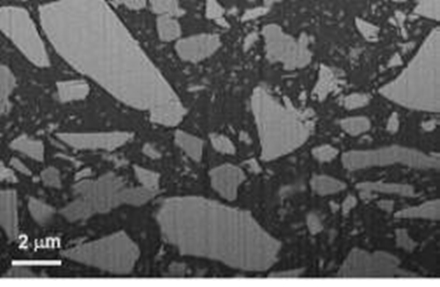Superplasticizers
Superplasticizers are nowadays commonly used in concrete technology to improve the workability of cementitious systems. On one hand, they enable the production of concretes with special flow properties like self-compacting concrete. On the other hand, superplasticizers allow concrete mix designs with very low water/cement ratios. Thus, high performance concretes with very high strength and durability can be achieved.

Among the first generation superplasticizers are sulphonated naphthalene-formaldehyde condensates, sulphonated melamin-formaldehyde condensates and modified lignosulpho-nates; the new generation products with enhanced properties are based on comb-shaped (PCE).
The superplasticizers are adsorbed on the cement particles and act as dispersants by elec-trostatic and/or steric repulsion effects. The research on cement-superplasticzer interactions and incompatibilities has been one of the major research topics over the last years, now mainly focussed on polymers based on polycarboxylate ether (PCE).
The workability properties of cement pastes, mortars and concretes containing superplasti-cizers are depending on various parameters. On the one hand, the type, the chemical com-position and the molecular structure of the admixture influence the rheological properties. On the other hand, the chemical composition of the cements (especially C3A-content and availa-bility of soluble sulphates during workability time), their specific surface, the presence of min-eral additions or of other types of admixtures as well as the hydrate phases formed during early hydration affect the behaviour of superplasticizers in pastes, mortars and concretes. In addition to the improvement of workability, superplasticizers usually retard cement hydration, depending on their C3A content.
Still many questions remain unsolved concerning the influence of superplasticizers on the early microstructural development, the nucleation and growth of hydrate phases, the dissolu-tion of clinker phases, the admixture adsorption behaviour and the interparticle forces. Due to the complexity of this multi-mineral system, the influence of superplasticizers has been in-creasingly investigated on simplified systems (pure clinker and hydrate phases) and model suspensions. Those studies deliver important information about e.g. influence of superplasti-cizers on nucleation and growth of hydrate phases, adsorption of superplasticizer on specific phases and influence of superplasticizers on electrostatic and/or steric repulsive forces.

Important publications
- Ferrari L., Kaufmann J., Winnefeld F., Plank J.: Impact of particle size on interaction forces between ettringite and dispersing comb-polymers in various electrolyte solutions, Journal of Colloid and Interface Science 419 (2014), 17-24.
- Ridi F., Fratini E., Luciani P., Winnefeld F., Baglioni P.: Tricalcium silicate hydration reaction in the presence of comb-shaped superplasticizers: Boundary nucleation and growth model applied to polymer-modified pastes, Journal of Physical Chemistry C 116 (2012), 10887-10895.
- Ferrari L., Bernard L., Deschner F., Kaufmann J., Winnefeld F., Plank J.: Study of polycar-boxylate-ether based superplasticizers on cement clinker surfaces by TOF-SIMS and AFM, Journal of American Ceramic Society 95 (2012), 2189-2195.
- Ferrari L., Kaufmann J., Winnefeld F., Plank J.: Force measurements by AFM on clinker sur-faces and model systems in aqueous solutions containing superplasticizer, Construction and Building Materials 35 (2012) 92-96.
- Ferrari L., Kaufmann J., Winnefeld F., Plank J.: Multi-method approach to study influence of superplasticizers on cement suspensions, Cement and Concrete Research 41 (2011), 1058-1066.
- Ferrari, L./Kaufmann, J. P./Winnefeld, F./Plank, J. Interaction of cement model systems with superplasticizers investigated by atomic force microscopy, zeta potential, and adsorption measurements. Journal of Colloid and Interface Science 2010, 347(1), 15-24
- Holzer L., Gasser P., Kaech A., Wegmann M., Zingg A., Wepf R., Muench B.: Cryo-FIB-nanotomography for quantitative analysis of particle structures in cement suspensions, Journal of Microscopy 227 (2007), 216-228.
- Zingg A., Holzer L., Kaech A., Winnefeld F., Pakusch J., Becker S., Gauckler L.: The microstructure of dispersed and non-dispersed fresh cement pastes - New insight by cryo-microscopy, Cement and Concrete Research 38 (2008), 522-529.
- Zingg A., Winnefeld F., Holzer L., Pakusch J., Becker S., Gauckler L.: Adsorption of polyelectrolytes and its influence on the rheology, zeta potential, and microstructure of various cement and hydrate phases, Journal of Colloid and Interface Science 323 (2008), 301-312.
- Zingg A., Winnefeld F., Holzer L., Pakusch J., Becker S., Figi R., Gauckler L.: Interaction of polycarboxylate-based superplasticizers with cements containing different C3A amounts, Cement and Concrete Composites 31 (2007), 153-162.
- Winnefeld F., Becker S., Pakusch J., Götz T.: Effects of the molecular architecture of comb-shaped superplasticizers on their performance in cementitious systems, Cement and Concrete Composites 29 (2007), 251-262.

-
Share
